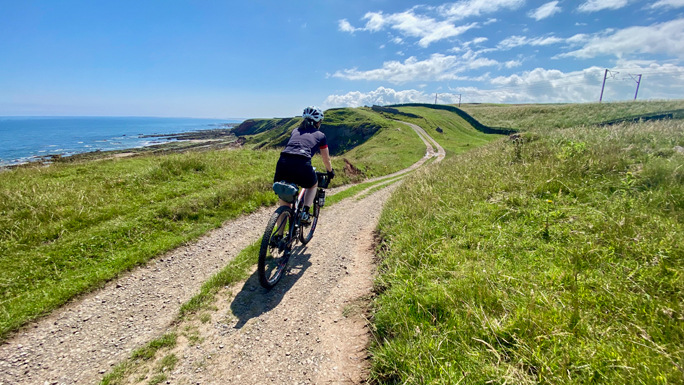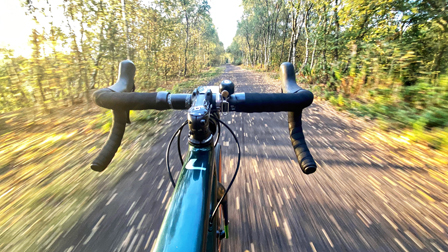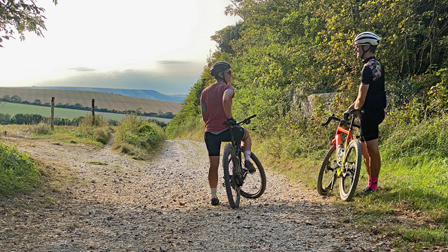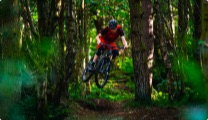Why should you try gravel riding? It allows you to explore new areas, to get away from noise/traffic and to ride many different surfaces. Most importantly you will come home with a big grin on your face. That’s what cycling should be all about isn’t it?
Gravel riding is big news in the cycling world. Over the last couple of years, sales of gravel bikes have skyrocketed and more and more of us are discovering the joy of riding non-paved trails on a drop bar gravel bike. But what exactly is it? Gravel riding as a term is perhaps a bit of a misnomer. In the same way that 99% of mountain bike riders don’t actually ride their bikes in the mountains, gravel riding isn’t just about seeking out the non-paved roads of the type typically found in the mid-west of the USA. Gravel riding should probably be called “ride-everything” or “mixed-surface-riding” or “I’ve-been-doing-this-for-years-but-didn’t-know-what-to-call-it”. But none of those descriptions are exactly catchy and in a world of ever shortening attention spans and the need for a catchy slogan, the gravel riding moniker is here to stay.

While some very fortunate USA-based gravel riders do have access to endless smooth-graded gravel tracks, elsewhere in the world a gravel ride will typically incorporate a wide range of surfaces. You might start off on a paved road, but then head off down a singletrack trail, or take in some farm tracks or tackle a section of cobbles. One of the biggest joys of gravel riding is the endless variety of surfaces and terrain that you can include in your route. And there’s always a café stop. Coffee and cake help make the world go round after all.
As well as the mix of surfaces, the next thing you might notice is the quiet. Gravel riding is all about getting away from busy roads and traffic. Even in the centre of many big cities there is often a range of non-paved riding just on your doorstep which is traffic-free.
Cyclists have been riding been riding away-from-the-traffic on drop bar bikes since the early 1900s. Initially it was French & Belgian professional riders looking for some winter training and riding along rough farm tracks between one village and the next. Then came off-road touring and the rise of groups like the UK’s Rough Stuff Fellowship. Next, from mainland Europe came cyclocross – flat-out winter racing, with riders often needing to hop off the bike and run to get over obstacles. Bikes were twitchy and not brilliantly equipped, but they were fun and cyclocross became the dominant winter sport for many cyclists. Out in the USA they were often doing the same thing at the same time. The only difference is that their terrain varied from that found in Europe and they coined an alternative term for drop-bar riding away from the road – gravel riding. The wide, straight, smooth gravel roads of the Midwest USA were arguably the crucible for development of the gravel riding scene.


In the early 2000s cyclists began adapting their road bikes to make them more suitable for off-road riding – cramming in as big as a volume tyre as they could fit. Using double-wrapped bar tape to reduce vibrations. Making homemade adaptations to the gear to make it more durable. Slowly bike manufacturers took note and started to make off-road drop bar bikes. Initially there was a lot of cross over with cyclocross bikes, but manufacturers tweaked the designs so that the bikes could take bigger volume tyres and had slacker geometry to make then more stable at speed.
From the early 2010s, things grew apace. In the USA, gravel racing developed into a behemoth. Events with 1000+ riders became more and more common. Manufacturers took note and the gravel scene burgeoned. Component manufacturers got on board too. You could now buy specialist tyres, more durable transmissions, gravel specific clothing/shoes, lightweight disk brake systems and components designed to cope with muddy or gritty conditions.
By the end of the 2010s, gravel riding was the fastest growing part of the cycling market. Practically every manufacturer offered a gravel bike in their range and many offered more than one. Gravel riding diversified into multiple different genres – racing, bikepacking/touring/exploring, ultra-endurance riding and just plain old trail riding. Then arrived e-gravel bikes on the scene too. With all this diversification and an incredible choice of bikes and gear available, the one common factor remained the same – gravel riding is all about fun.



The great thing with gravel riding is that you don’t need a specific gravel bike to enjoy it. The only thing you need is a well-maintained bike with the biggest possible volume tyres that you can shoehorn into it. So why choose to ride a gravel bike? Because they are really fun to ride! The lack of suspension and pared-down componentry reduces weight and makes them more lively and easier to use on climbs than traditional off-road bikes, but with more durability/reliability than using a road bike. The stripped-back approach to kit is part of the fun – underbiking, where you deliberately choose to ride a bike that is slightly less than ideal for the trail surface that you’re riding on, is part of the thrill. A gravel bike turns trails that you previously thought of as a little dull on your full-suspension mountain bike into something more challenging and the sense of achievement is often bigger.
A gravel bike is a chameleon – you can use it on the road and it’s nearly as fast as a road bike. You can ride it off-road and it’s almost as competent as a mountain bike. A gravel bike will be arguably more fun everywhere. That flexibility to turn off the road onto a trail just because you want to know where it goes or to include a section of smooth cycle path because you need to get to the café before it closes for the day – that’s the joy of a gravel bike.
If we had to sum-up in one word why you should try gravel riding, it would be fun. It will allow you to explore areas you might not have tried before. It will get you away from noise and traffic. It will open an incredible range of riding surfaces. And, perhaps most importantly, you will come home with a big grin plastered across your face. Surely, that’s what cycling should be all about isn’t it?
About the author

Olly Townsend is the editor of Gravel Union and spends his entire life dreaming about gravel riding. He’s based in the UK, but has been fortunate enough to ride gravel all over the world.
All images by Olly Townsend/Gravel Union





